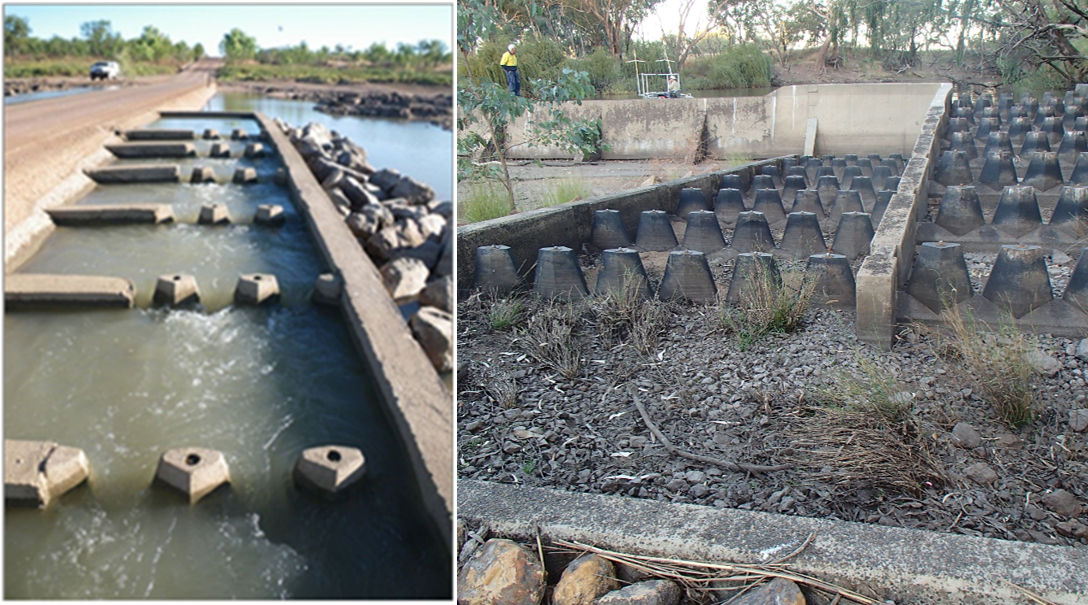|
|
Cone fishwayCone fishway – Key considerations Select from the tabs below In addition to the general information for all fishway types, the following applies to cone fishways. Suitability and limitationsCone fishways have been recorded passing fish as small as 9 mm in length and are particularly useful where biopassage of small fish is a major ecological priority.[4] These fishways tend to have relatively low discharge and turbulence[3] and can often be built on a slightly steeper gradient than vertical slot fishways[2]. Cone fishways can replace rock ramp fishways, and can be particularly useful in existing culverts, pre-cast channels, areas where suitable rock is unavailable, and in remote areas[3]. Cones have been constructed from a range of materials, some original fishways trialled polyethylene plastic cones[1], more recent fishways have all utilised concrete[4].Cone fishways are relatively inexpensive with short on-ground construction times,[3] as much of the structure is prefabricated[3]. There are several cone fishways in central to northern coastal Queensland, including in the Northern Gulf, Southern Gulf, Fitzroy, and Mackay-Whitsunday region. Disclaimer: In addition to the standard disclaimer located at the bottom of the page, please note the Fishways (biopassage structures) disclaimer. References
Last updated: 30 April 2021 This page should be cited as: Department of Environment, Science and Innovation, Queensland (2021) Cone fishway – Key considerations, WetlandInfo website, accessed 8 May 2025. Available at: https://wetlandinfo.des.qld.gov.au/wetlands/management/fish-passage/technologies/fishway-options/cone/key-considerations.html |

 — Department of the Environment, Tourism, Science and Innovation
— Department of the Environment, Tourism, Science and Innovation

